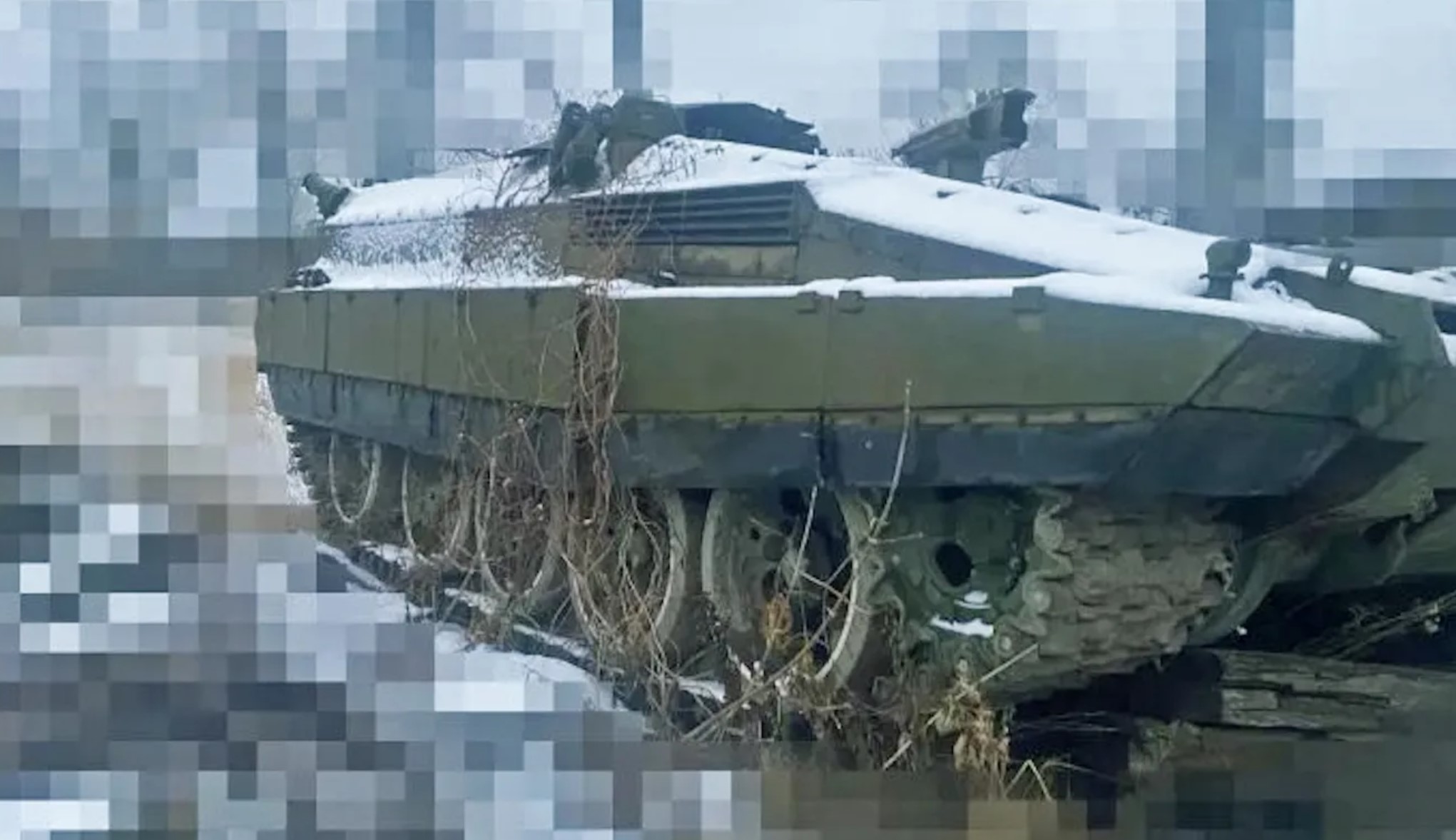Recent photos circulating on social media have revealed what appears to be the first sighting of Ukraine's rare BMP-55 heavy infantry fighting vehicle in an operational context, The War Zone reports. This vehicle represents a significant modification of the Soviet-era T-55 tank, converted to transport soldiers across the battlefield.
"While it's unclear when or where the imagery was taken, this seems to be the first time a BMP-55 has been sighted in an apparently operational context," TWZ states. The report adds that with "suggestions that only one example of these vehicles was ever completed, this makes its appearance all the more remarkable."
The photos reportedly emerged on the Telegram Military Informant channel before spreading to other platforms. The images show the vehicle partially covered in snow, appearing abandoned but without obvious signs of damage. It remains unclear whether the vehicle is still in Ukrainian hands or has been captured by Russian forces.
Engineers reinvent the T-55
The Kharkiv Armored Repair Plant developed the BMP-55 around 2000. The project aimed to repurpose surplus T-55 tanks, which had become obsolete for modern combat operations. The conversion process involved removing the original turret and installing a new armored troop-carrying compartment on the existing tank chassis.
According to manufacturer data, the BMP-55 weighs about 28.5 tons without armament and can transport up to 10 troops, although the manufacturer specifies a standard eight-man infantry squad. The vehicle features a rear-mounted ramp for troop disembarkation and is operated by a crew of three.
For armament, the vehicle spotted in the recent imagery "appears to have a launcher for a pair of anti-tank guided missiles in a remote station fitted on top of its hull." However, the missiles themselves were not visible. The original design also included a remote weapon station with a 12.7mm heavy machine gun, but this appears to have been removed from the photographed vehicle.
Regarding protection capabilities, TWZ describes a vehicle designed with substantial defensive features. The BMP-55's frontal armor could withstand hits from 25-30mm autocannon fire, while its rear protection was rated against 14.5mm armor-piercing rounds. The vehicle also featured specialized underside armor designed to protect against anti-tank mine blasts, with options for additional explosive reactive armor on its front and sides.
Despite its innovative design, neither the BMP-55 nor its larger cousin, the BMP-64 (based on the T-64 tank), received export orders or were adopted by the Ukrainian Armed Forces.
"During Ukraine's years of peace in the 2000s, there was little impetus to convert tanks to become infantry fighting vehicles, although these would be of considerable value now," TWZ notes.
Others built them first
The concept of converting tanks into heavy infantry fighting vehicles has been successfully implemented elsewhere, particularly in Israel. The Israeli Defense Forces have developed several such vehicles, including the Achzarit (also based on a T-55 chassis), the Nagmachon, and the current Namer.
These vehicles are "considered especially useful for fighting in urban, counterinsurgency scenarios," with additional applications in combat engineering and fire support roles.
Russia has pursued a similar concept with its BMPT, which repurposes the T-72 tank chassis for urban warfare. This vehicle has reportedly seen combat in Ukraine but remains a very scarce vehicle in Russian service.
As for the BMP-55 spotted in Ukraine, TWZ concludes that "this may well be the first and only time we get to see it on — or close to — the battlefield," unless production has secretly resumed since Russia's full-scale invasion—a possibility for which there is currently no evidence.

